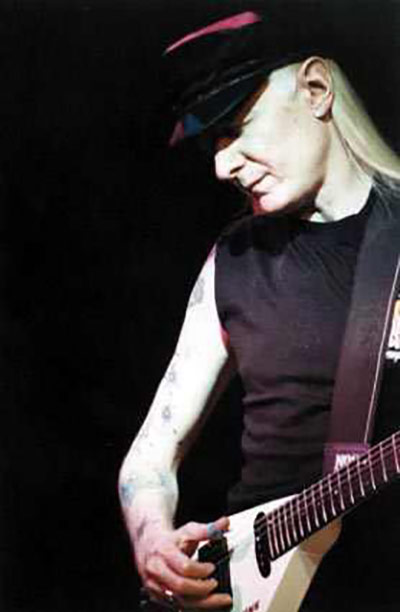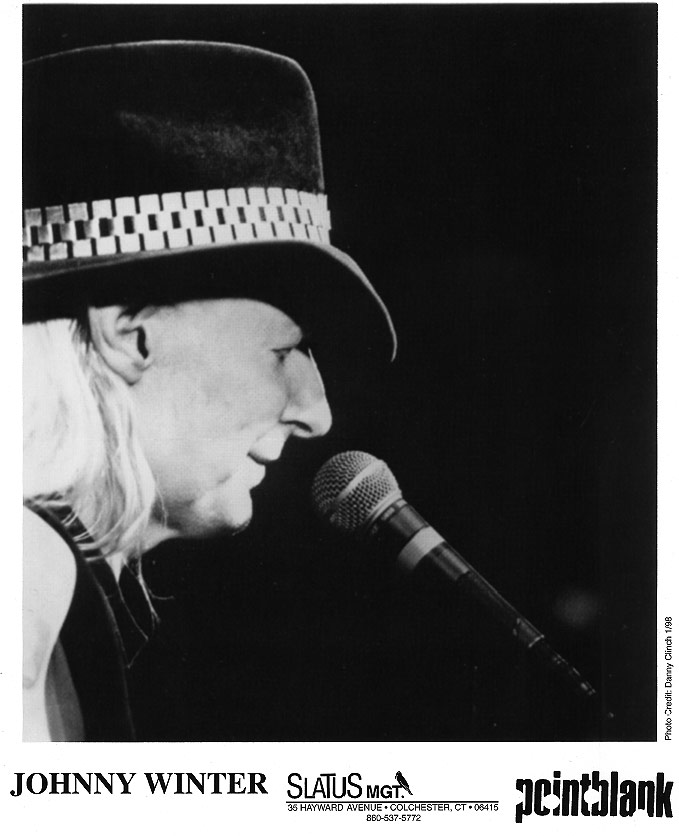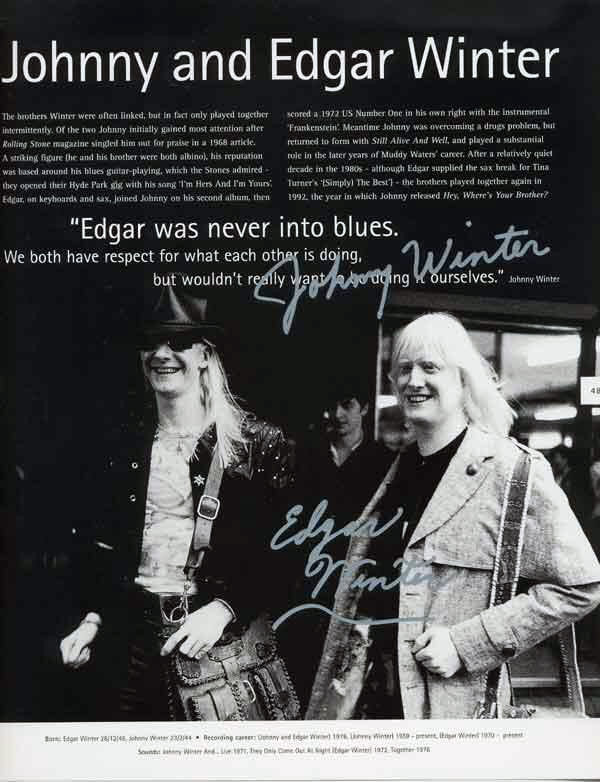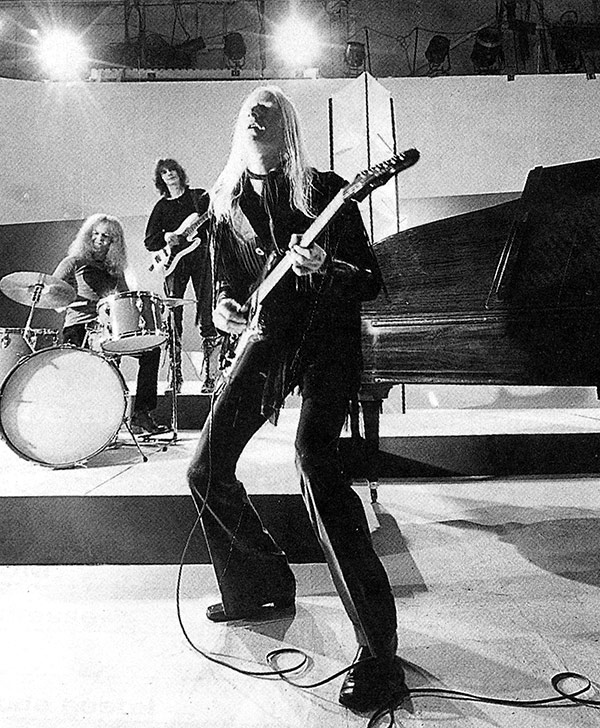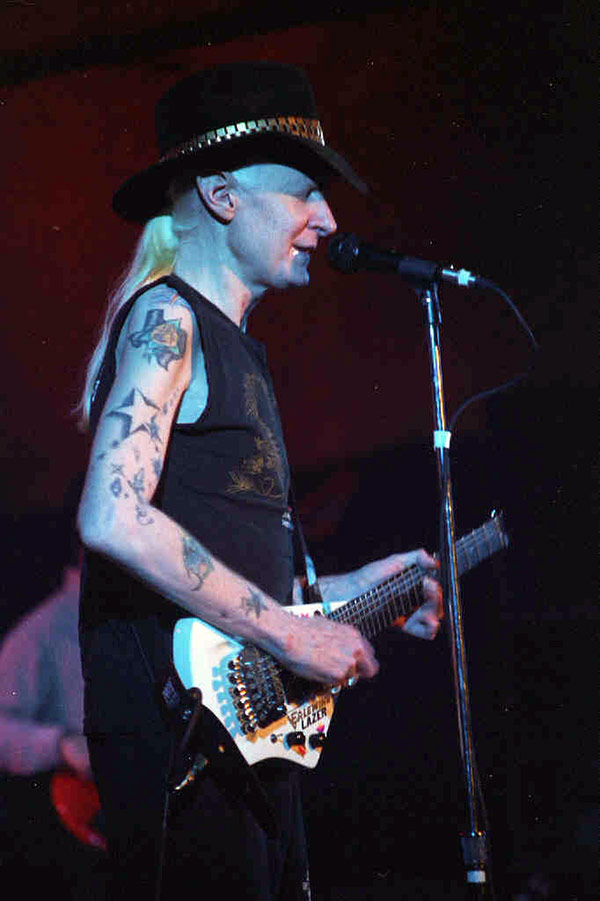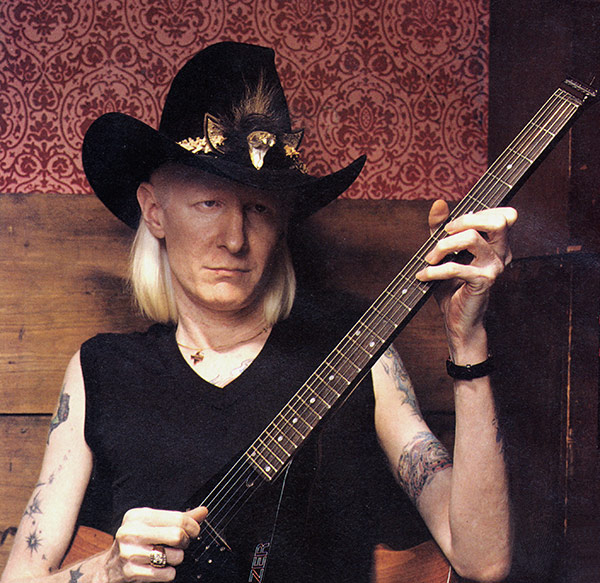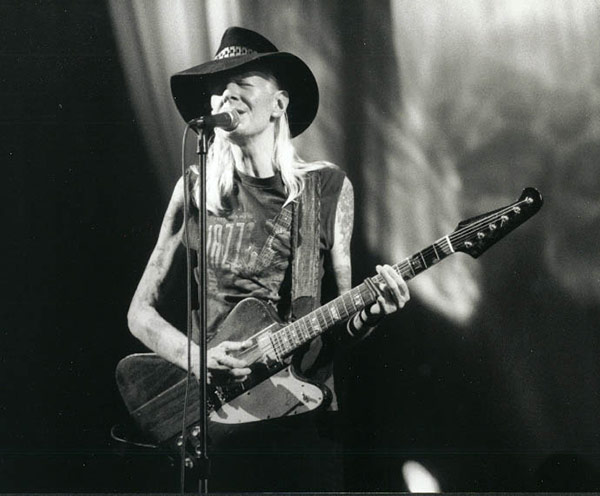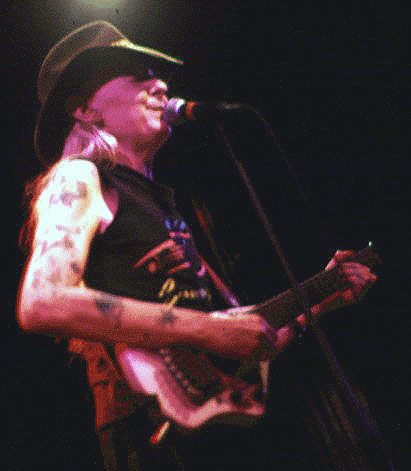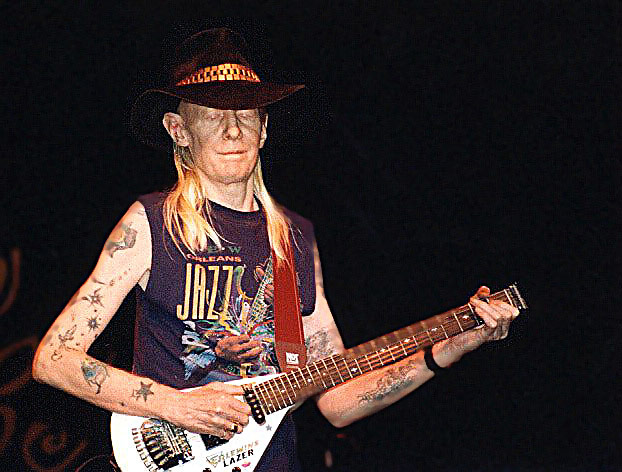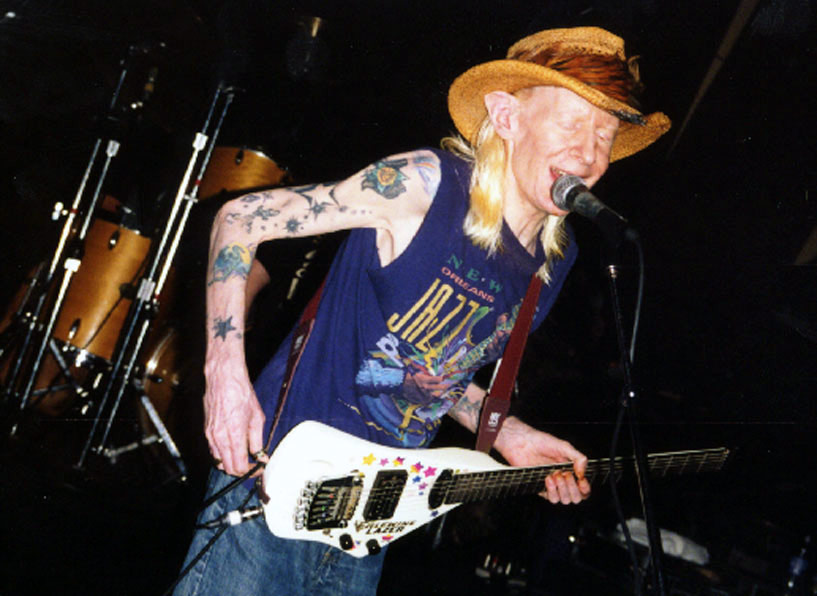Tribute to Jimi by Johnny Winter on page 26-27
"
Steve Paul
, who was my manager, owned a club called The Scene which was the big happening rock club in New York in 1968. All the nice looking groupies were there, and the musicians were there because the chicks were there. It worked out nice for everybody. There were a lot of real interesting jams there, though how good they were would depend on how inebriated the musicians were.
"Now, of course, as soon as I'd heard Jimi's first record I was in love with his band, so it was a natural thing for me to want to play with him. He was real interested in playing slide, so he seemed to enjoy playing with me. He never really made much of an effort to learn slide, though. As good as he was, I'm sure he could've done it.
"I think he had time booked at the Record Plant every damn night, and when the Scene would close down he'd get a bunch of people together and go over the Record Plant and jam. Then he'd listen to the results the next day when he'd be straighter, and hopefully get ideas from them.
"By the time we met we both had our styles, but you can always learn from other people. I'm sure that there are little things in my playing that I don't even think about anymore that came from Jimi.
"Jimi was really familiar with the blues - Howlin' Wolf and Muddy Waters - he could play good straight blues. That's what he was really-a great electric blues player. He just stretched it out. He had more chords, but his playing was all blues. He had so much feeling, and he expanded it with the electronics. Some people call them gimmicks, but they're hard to work with. I get all goofed up when I start using that stuff, but Jimi would hook up all these different things together and know how to work them. It was like he was playing a different instrument. It was really amazing what he could do with effects. He was creating a 21st Century music. There'll never be anybody that will equal what he did.
"You asked what he was like as a person? Well, his main focus was on music and chicks. He really didn't talk about politics or his past. He'd be friendly, but kind of distant. He wasn't the kind of guy you'd tell your problems to. When you're that big, you just can't open yourself up to everybody. That's one of the reasons he liked Billy Cox - Billy knew him and grew up with him. He knew Hendrix before his success. See, once you've made it, everybody feels like they know you, and it can be very lonely. Jimi didn't have anybody looking out for him. That was one of his main problems. Everybody wanted something. It's too bad that Jimi wasn't looking out for Jimi, either.
"If only he'd had somebody to say, 'Hey man, put yourself in the hospital for a while, get away from the dope, and think about what you want to do.' It would have made a lot of difference. But in those days drugs were thought of as something good, and Jimi was considered the king of the whole thing. Jimi and Janis Joplin were the king and queen of the drug culture. They almost had to die, because you can't have a culture based on drugs. Toward the end, every time I'd see him he looked more and more depressed."
